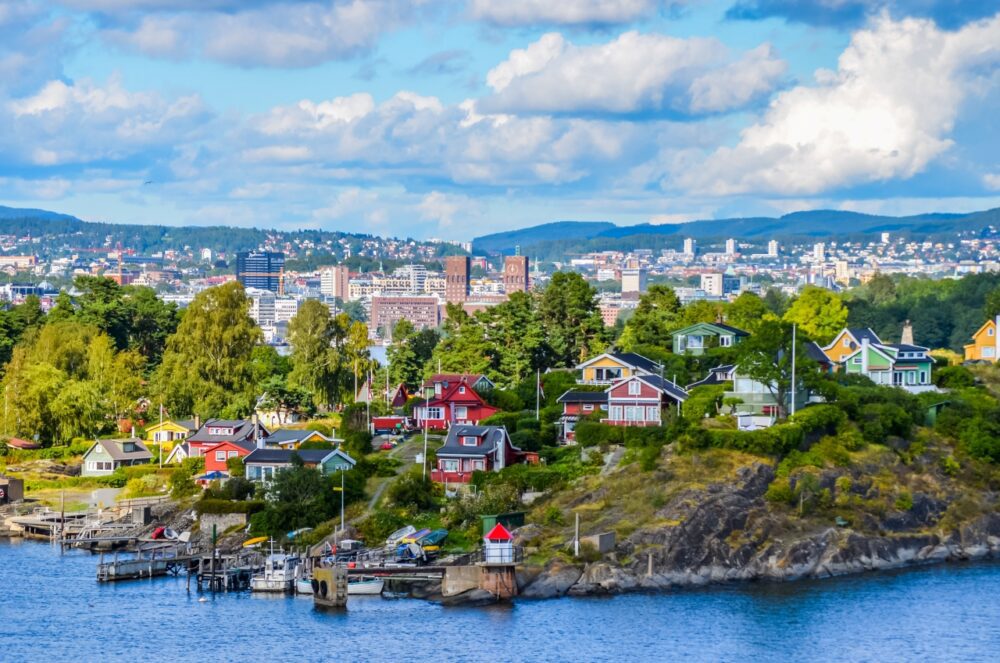
Is Oslo worth visiting? Absolutely! The first time I visited Oslo, I was amazed by how effortlessly the city blends urban sophistication with breathtaking natural beauty. One moment, I was admiring world-class art at the Vigeland Sculpture Park, and the next, I was hopping on a ferry to explore the nearby fjords. Oslo’s clean, modern vibe, combined with its deep connection to nature, creates a city that’s as refreshing as it is inspiring.
As the capital of Norway, Oslo is a hub of Scandinavian culture and innovation. Nestled between the Oslofjord and lush forested hills, the city is a paradise for outdoor enthusiasts and art lovers alike. From the striking architecture of the Oslo Opera House to the historical treasures of the Viking Ship Museum, there’s no shortage of fascinating things to see and do. Whether you’re strolling along the waterfront in Aker Brygge, tasting Nordic cuisine, or exploring the city’s cutting-edge museums, Oslo offers an experience that’s uniquely Norwegian.
But is Oslo worth visiting for you? In this blog post, we’ll uncover the top 10 reasons why Oslo should be on your travel list, from its cultural highlights to its stunning outdoor activities. Plus, we’ll share travel tips to help you make the most of your Norwegian adventure. Keep reading to discover why Oslo deserves a spot on your itinerary.
Table of Contents
Pros – Reasons You Should Visit Oslo
1. A Stunning Waterfront City Surrounded by Nature
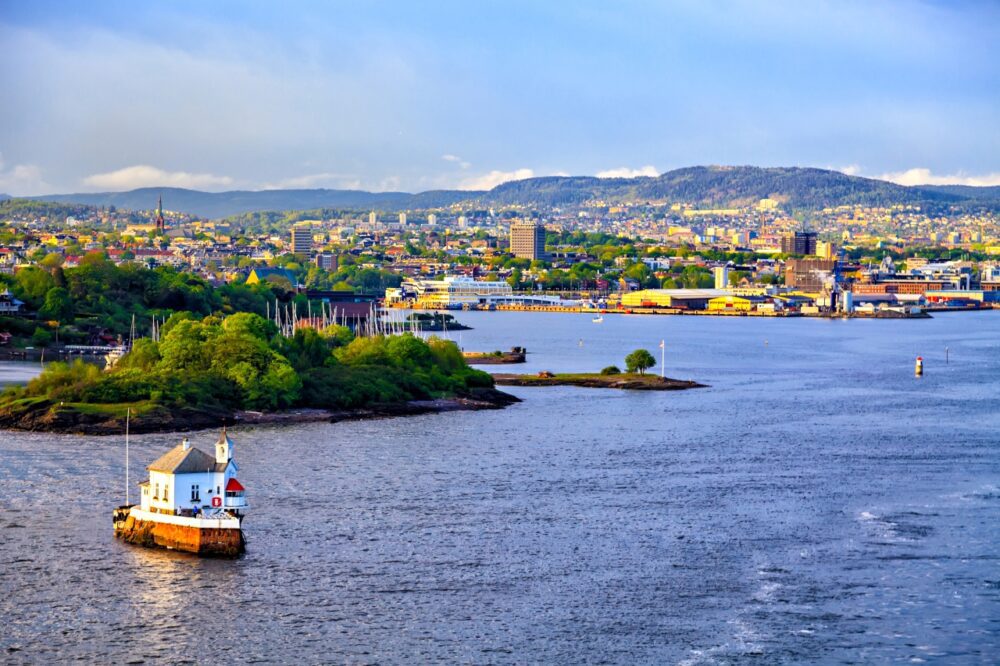
Oslo’s unique location sets it apart from other European capitals. The city sits at the head of the Oslofjord and is surrounded by forests, hills, and lakes, making it one of the best places to combine urban exploration with outdoor adventures. Unlike many capital cities that feel crowded and hectic, Oslo has an open, spacious atmosphere with plenty of green spaces and waterfront areas to enjoy.
I loved how easy it was to escape into nature while still being in the middle of the city. One moment, I was strolling along the modern waterfront, and the next, I was hiking in Nordmarka Forest just a short train ride away. Whether you enjoy kayaking, hiking, or simply relaxing by the water, Oslo offers the perfect mix of city life and outdoor experiences.
2. The Beautiful and Modern Oslo Opera House
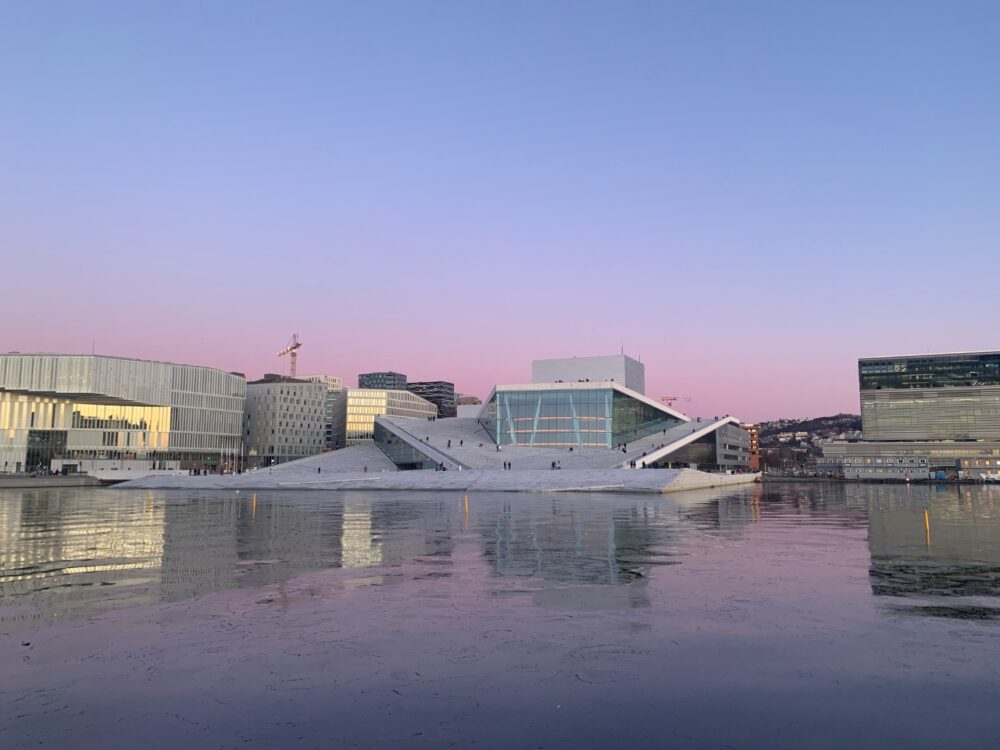
One of Oslo’s most iconic landmarks is the Oslo Opera House, a striking piece of modern architecture that looks like it’s rising straight out of the water. Its white, angular design invites visitors to walk up its sloping roof, offering panoramic views of the city and the fjord. It’s not just a place for opera and ballet lovers—it’s an attraction in itself, blending cultural significance with innovative design.
I walked up to the top of the Opera House at sunset, and the view was breathtaking. The sky turned shades of pink and orange, reflecting off the water and the building’s marble surface. Even if you don’t catch a performance, simply visiting the Opera House and enjoying the scenery is a must while in Oslo.
3. A Thriving Art Scene with Incredible Museums
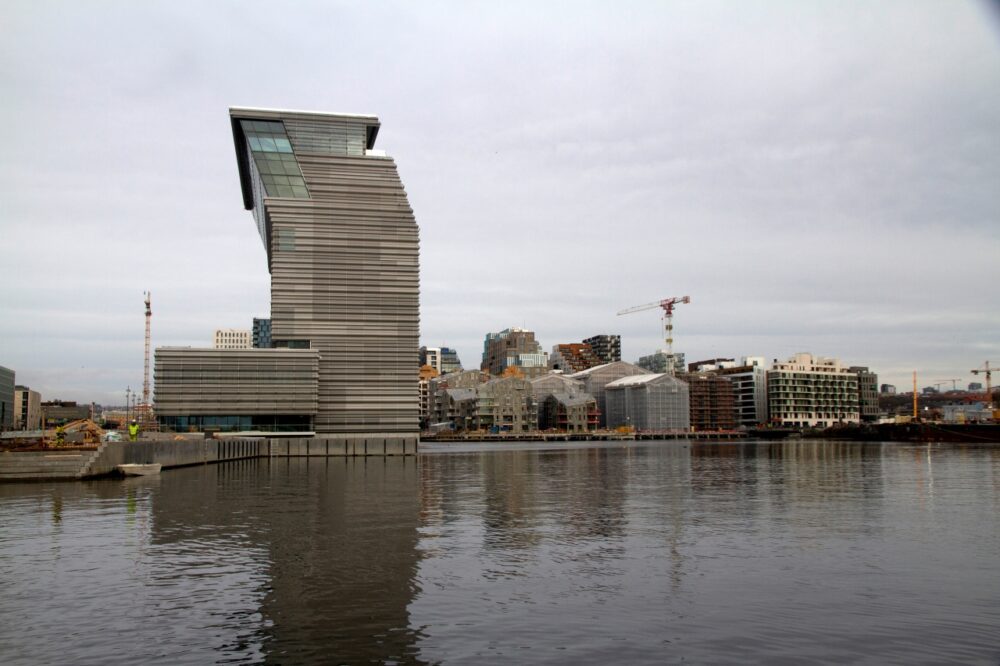
Oslo has a fantastic art scene, with world-class museums showcasing everything from Viking history to modern art. The newly opened MUNCH Museum, dedicated to Edvard Munch, is home to several versions of The Scream, one of the most famous paintings in the world. The National Museum, which opened in 2022, houses an impressive collection of Norwegian and international art, including works by Van Gogh, Picasso, and Monet.
I visited both museums and was amazed at the quality of the collections. The MUNCH Museum, in particular, was a highlight, offering a deep dive into the life and work of Norway’s most famous artist. Even if you’re not a big art fan, these museums provide a fascinating insight into Norwegian culture and creativity.
4. Viking History and Fascinating Cultural Heritage
Oslo is the perfect place to explore Norway’s Viking past. The city’s Viking Ship Museum, currently under renovation, is set to reopen as the Museum of the Viking Age in 2026, promising an even more immersive experience. In the meantime, visitors can explore the Historical Museum, which features incredible Viking artefacts, including weapons, jewellery, and everyday objects.
Seeing the well-preserved Viking artefacts up close was an unforgettable experience. It gave me a real sense of how skilled and resourceful the Vikings were, far beyond their popular image as just raiders. If you’re fascinated by history, Oslo offers plenty of ways to connect with Norway’s rich cultural past.
5. The Lively and Scenic Aker Brygge Waterfront
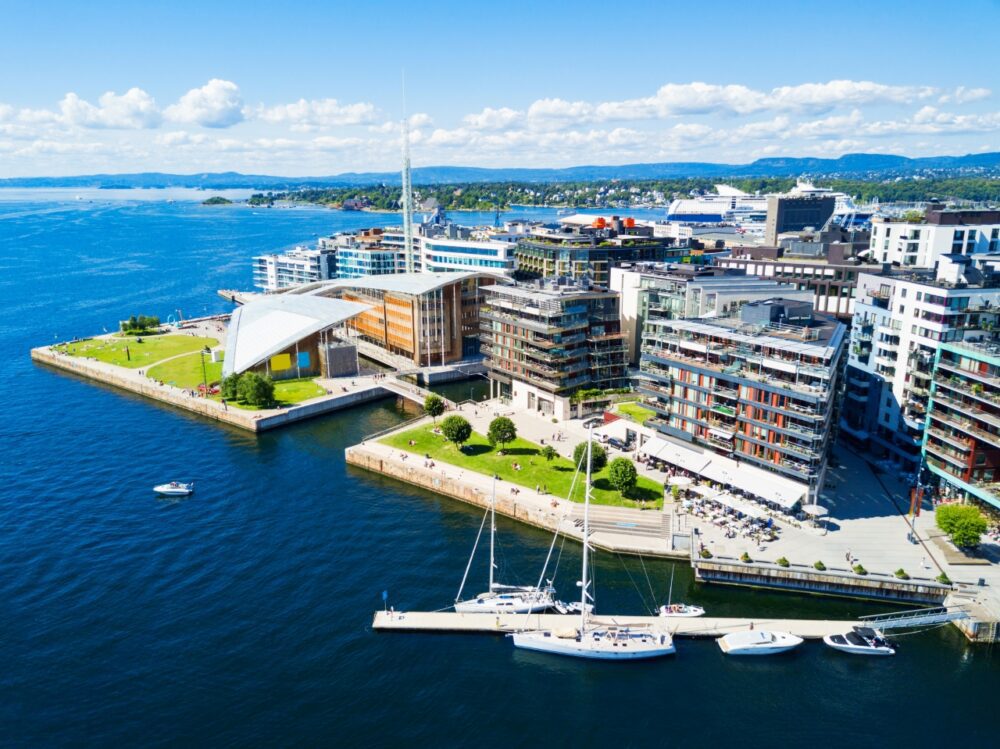
Aker Brygge is one of the most vibrant areas in Oslo, lined with restaurants, cafés, and shops, all set along the stunning waterfront. This area is perfect for people-watching, dining with a view, or simply taking a relaxing walk along the boardwalk. It’s also the departure point for ferries heading to the Oslofjord islands, making it a great starting point for exploring the city.
I spent an afternoon here, enjoying a seafood meal with a view of the fjord. The atmosphere was lively but not overwhelming, and there was always something to see, from street performers to boats coming and going. Whether you want to grab a bite, take in the scenery, or enjoy the fresh air, Aker Brygge is one of Oslo’s best spots.
6. Holmenkollen Ski Jump and Stunning Views Over the City

Holmenkollen is a must-visit for anyone coming to Oslo. This iconic ski jump is not only a major sports venue but also offers one of the best panoramic views over the city and the surrounding fjord. There’s also the Holmenkollen Ski Museum, which provides a fascinating look at Norway’s deep connection to skiing and winter sports.
I took the metro up to Holmenkollen, and the journey itself was worth it—the higher I went, the better the views became. Standing at the top of the ski jump, imagining athletes launching themselves into the air, was both thrilling and slightly terrifying. Even if you’re not into skiing, the view alone makes the trip worthwhile.
7. A City Designed for Walking and Cycling
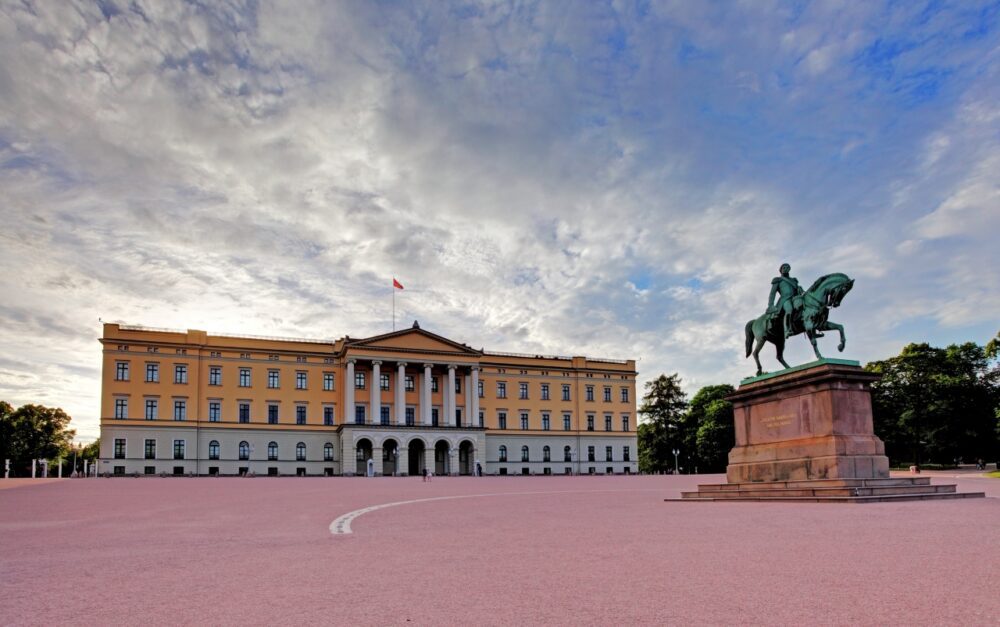
Oslo is one of the most pedestrian- and bike-friendly cities in Europe. The city centre is compact, making it easy to explore on foot, and there are plenty of dedicated cycling paths for those who prefer to get around on two wheels. Many major attractions, including the Royal Palace, Karl Johans Gate, and the Oslofjord waterfront, are all within walking distance of each other.
I loved how easy it was to navigate the city without relying on public transport. Walking through Oslo felt safe, clean, and relaxed, and I never felt rushed or overwhelmed by traffic. If you enjoy exploring a city at a leisurely pace, Oslo is perfect for that.
8. Incredible Nature Right on the City’s Doorstep
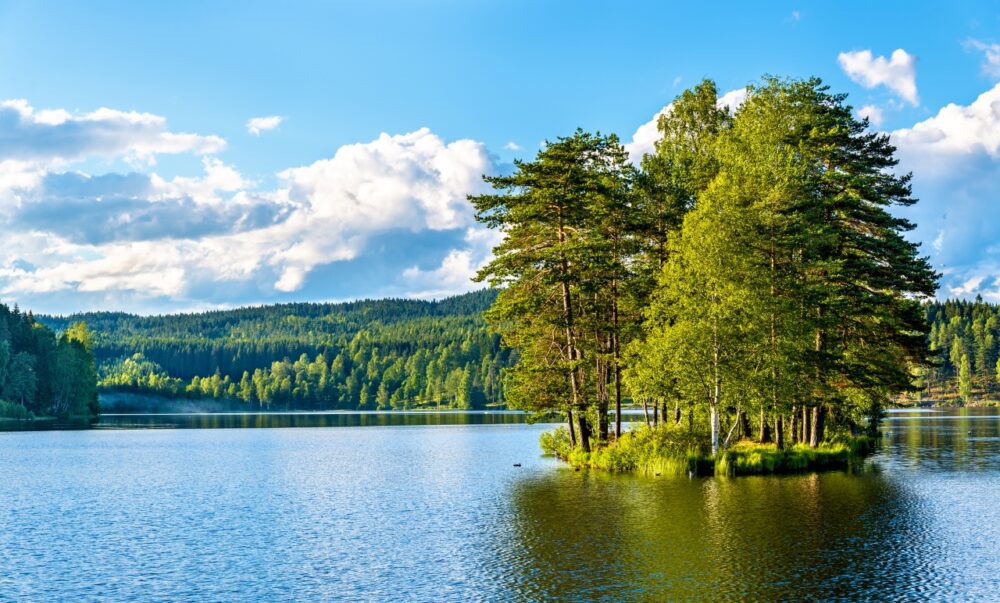
One of the best things about Oslo is how easy it is to escape into nature. The city is surrounded by forests, lakes, and fjords, offering countless opportunities for hiking, kayaking, and even swimming in the summer months. Nordmarka, a massive forest just outside the city, is perfect for a day of outdoor adventure.
I took a short metro ride to Sognsvann Lake and was amazed at how quickly the urban environment gave way to untouched nature. The air was crisp, the trails were peaceful, and the lake was incredibly inviting. For a capital city, Oslo offers an unparalleled connection to the great outdoors.
9. A Commitment to Sustainability and Green Living
Oslo is one of the most environmentally friendly cities in the world, with a strong focus on sustainability, renewable energy, and green initiatives. The city is aiming to become completely car-free in its centre, and electric cars, bikes, and ferries are a common sight. Public transport is efficient and eco-friendly, making it easy to get around without harming the environment.
I noticed how clean the air felt and how quiet the streets were compared to other big cities. Even the new buildings and urban projects were designed with sustainability in mind. If you appreciate cities that prioritize the environment, Oslo is a fantastic example of how urban living and sustainability can go hand in hand.
10. A Laid-Back Atmosphere with Friendly Locals
Despite being a capital city, Oslo has a surprisingly relaxed and welcoming atmosphere. Norwegians might not be the most outgoing at first, but they are friendly, helpful, and always willing to offer directions or recommendations if you ask. The overall pace of life in Oslo is much slower than in many other capitals, making it a great place to unwind and enjoy at your own speed.
I found that the city never felt too busy or chaotic, even in the popular tourist areas. The combination of open spaces, friendly locals, and a calm pace made it one of the most stress-free city experiences I’ve had in Europe. Whether you’re looking for cultural attractions, outdoor adventures, or simply a relaxing getaway, Oslo offers a little bit of everything without the usual big-city stress.
Cons – Things to Consider When Visiting Oslo
1. One of the Most Expensive Cities in the World
Oslo consistently ranks as one of the most expensive cities to visit, with high prices for accommodation, food, transportation, and entertainment. A simple meal at a casual restaurant can cost as much as a fine dining experience in other European capitals, and even basic groceries and drinks can be surprisingly pricey. While there are ways to save money, budget travellers may find it challenging to keep expenses under control.
I quickly realized how costly Oslo was when I stopped for a coffee and a pastry, only to find it cost nearly double what I had paid in other European cities. A dinner out at a mid-range restaurant easily pushed past €30 per person, and even street food options weren’t particularly cheap. If you’re planning a trip to Oslo, it’s best to set aside a generous budget or prepare to make use of grocery stores and free activities to keep costs down.
2. Unpredictable Weather That Can Change Quickly
Oslo’s climate can be unpredictable, even in the summer. Rain showers can appear suddenly, temperatures can fluctuate dramatically within a single day, and in the winter, the city can be dark and bitterly cold. While Norwegians are used to adapting to the weather, visitors might find it frustrating to plan outdoor activities when conditions change so frequently.
During my visit in early June, I started the day in a t-shirt under blue skies, but by afternoon, the temperature had dropped, and a chilly wind made me regret not bringing a jacket. In winter, short daylight hours mean you’ll only have a few hours of sunlight for sightseeing, and snowstorms can sometimes cause travel disruptions. It’s always best to check the forecast and pack layers so you’re prepared for any sudden changes.
3. Limited Nightlife Compared to Other European Capitals
Oslo has a decent selection of bars, pubs, and live music venues, but its nightlife scene is relatively subdued compared to cities like Berlin, London, or even Stockholm. Many bars and clubs close earlier than expected, and strict alcohol laws mean that drinks can be expensive, with high taxes on beer, wine, and spirits. The cost alone makes going out for drinks a pricey affair, and there aren’t as many all-night party spots as in other European cities.
I went out with friends one evening, and while we found some cosy bars with great atmospheres, the prices were steep—cocktails were easily €15 or more, and even a simple beer was noticeably expensive. The city also has a strict drinking culture, with alcohol only sold in government-controlled stores (Vinmonopolet), which close early in the evening. If nightlife is an important part of your travels, Oslo might not be the best destination for partying.
4. Public Transport Can Be Expensive and Confusing for Visitors
Oslo has an efficient and reliable public transport system, including trams, buses, ferries, and a metro, but it’s not the cheapest. While single tickets and day passes are available, they are relatively expensive compared to public transport in other European capitals. Additionally, navigating the system can be a bit confusing for first-time visitors, as some ticket machines and schedules don’t always have clear English translations.
I found the metro system easy to use once I got used to it, but buying tickets was a bit of a hassle. There aren’t always ticket machines at tram stops, and if you forget to buy a ticket in advance, fines for riding without one are high. While public transport is necessary for getting to places like Holmenkollen or the surrounding forests, it’s best to plan ahead and download the local transport app to make the process smoother.
5. Certain Areas Feel Quiet and Empty, Especially in Winter
Oslo is a relatively small capital city, and unlike other major European hubs, it doesn’t always have the same energy or buzz. Outside of the city centre, some neighbourhoods can feel quiet, especially in the evenings or during the winter months when people tend to stay indoors. Visitors expecting a constantly lively atmosphere might find parts of the city a bit too calm for their liking.
I noticed this especially in the winter, when the streets felt empty by early evening, and many restaurants and shops closed earlier than expected. Even in the summer, Oslo lacks the kind of street life and lively squares that you’d find in places like Paris or Rome. While this slower pace can be a positive for those looking for a peaceful experience, travellers who prefer bustling cities with lots of spontaneous activity might find Oslo a bit too quiet at times.
When to Visit Oslo
The best times to visit Oslo are spring (April to June) and early autumn (September to October), when the weather is mild, the city’s parks and fjords are at their best, and cultural events like the Norwegian Constitution Day (May 17th) or Oslo Culture Night add vibrancy. Summer (July and August) offers long daylight hours and a lively atmosphere, perfect for outdoor activities like fjord cruises or exploring the city’s islands. Winter (November to March) transforms Oslo into a snowy wonderland, ideal for skiing in the nearby hills or enjoying the city’s cosy indoor attractions.
How to Get to Oslo
Oslo Gardermoen Airport (OSL), located 50 kilometres north of the city, is the main gateway, offering connections to destinations worldwide via airlines like SAS, Norwegian Air, and Lufthansa. From the airport, the Flytoget Airport Express Train reaches Oslo Central Station in 20 minutes, while regular NSB trains and buses provide more affordable options. Taxis are available but pricey. For regional travel, Oslo is well-connected by train to neighbouring capitals like Stockholm and Copenhagen, and ferries link Oslo to Denmark and Germany.
Where to Stay in Oslo
Oslo offers diverse accommodation options across its distinct neighbourhoods:
- Luxury: City Centre – Stay near attractions like the Royal Palace and Karl Johans Gate. Options include The Thief, a chic waterfront hotel, and Hotel Continental, known for its classic elegance.
- Mid-range: Grünerløkka – A trendy area with cafes and boutiques. Consider PS:Hotell, a social enterprise with stylish rooms, or Comfort Hotel Grand Central, which blends convenience and modern comfort.
- Budget: Majorstuen or Grønland – Affordable areas with easy access to transport. Stay at Anker Hostel or Saga Hotel Oslo Central for excellent value.
Getting Around Oslo
Oslo’s Ruter public transport network is efficient and includes trams, buses, ferries, and the metro, making it easy to navigate the city and surrounding areas. Day passes are affordable and cover all modes of transport. Cycling is popular during the warmer months, with bike-sharing through Oslo City Bike, allowing visitors to explore the parks and waterfront. Walking is highly recommended in central areas like Aker Brygge and Grünerløkka, where attractions are close together. For a unique perspective, hop on a ferry to explore the Oslo Fjord islands.
How Long to Spend in Oslo
Three to four days is ideal for exploring Oslo’s highlights, including the Vigeland Sculpture Park, the Norwegian National Opera & Ballet, the Munch Museum, and a fjord cruise. This timeframe allows time to visit cultural sites like the Viking Ship Museum and sample Nordic cuisine at local restaurants. With an extra day, consider a trip to Holmenkollen Ski Jump or take a scenic train ride to the nearby forests and lakes. Oslo’s blend of nature, history, and modern design makes it a captivating destination for a short but enriching stay.
Conclusion
So, is Oslo worth visiting? Absolutely! With its vibrant cultural scene, stunning fjord views, and a perfect mix of urban and natural attractions, Oslo is a city that caters to all types of travellers. Highlights like the Viking Ship Museum, the Oslo Opera House, and its endless opportunities for outdoor adventures make it a must-visit. While it’s true that Oslo can be pricey, the quality of the experiences more than justifies the cost. If you’re ready to discover the best of Norway’s capital, start planning your trip to Oslo today—you won’t be disappointed!
